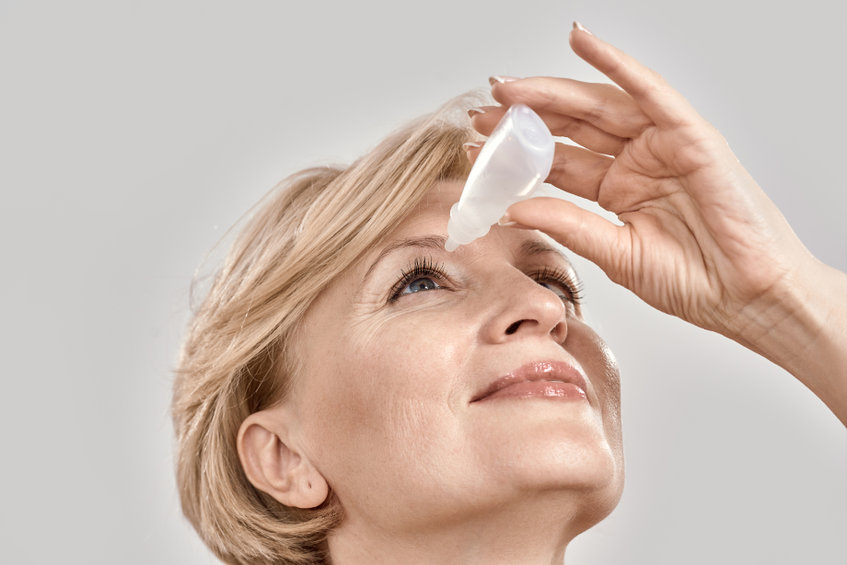Cataract surgery, as discussed in previous blogs, is the most common type of eye surgery performed worldwide. It has been modernized and nearly perfected over decades of advancement and is safe for nearly any patient suffering from visually significant cataracts. As doctors learned about the ways the eye reacts and heals after surgery, specific drop schedules became the standard of care for patients post-surgery. Although the exact medications may differ between physician and location, a general strategy of three types of drops is recommended; an antibiotic, a non-steroidal anti-inflammatory (NSAID), and a corticosteroid. Together, these three drops help prevent infection and promote controlled healing, all while keeping the patient comfortable during their post-op period.
See our blog about Eye Drops Instead of Glasses here.
Antibiotics are used after surgery to prevent infection from occurring at the site of the incision. During cataract surgery, a physical incision is made into the eye to remove the cataract and replace it with a new artificial lens. The wound left by the surgeon is an area of compromise and an entry point for bacteria. Although there is extensive use of antimicrobial agents prior to and during surgery, the coverage thereafter is required to ensure the incision site remains free of foreign invaders. Common antibiotics used after cataract surgery are Ofloxacin, Gatifloxacin, and Moxifloxacin. These drops will usually have a tan cap and are used for around one week after surgery.
NSAIDs are a class of drop that decrease both pain and inflammation. Cataract surgery is a disruptive process to normal eye function and is thus a strong stimulus for inflammation. Inflammation after surgery can cause pain, redness, decreased vision, and even lead to poor visual outcomes post-surgery. The use of NSAID drops such as Bromfenac, Ketorolac, and Diclofenac helps the eye heal and prevents post-op complications. These drops will usually have a grey cap and are used for around two weeks.
The final class of drops used are corticosteroids. These drops are also aimed at decreasing inflammation. As mentioned above, inflammation is expected after surgery, and corticosteroids have powerful anti-inflammatory effects. Corticosteroids are known to increase the pressure inside the eye, something your doctor will check for at post-op visits. The most common corticosteroid drop used after cataract surgery is Prednisolone acetate. This drop usually has a pink cap and is generally used for around a month. This drop may be stopped abruptly or tapered depending on the case and doctor’s preference.
Most surgical offices will provide the patient with an “eye drop calendar” that details each drop, how often to use them, and when to stop each one. It is important to follow the instructions exactly as well as present to each follow-up scheduled by your doctor. Your doctor will be closely monitoring the healing process for at least one month after surgery, and missing drops or appointments could result in a less predictable visual outcome. If you have questions about cataract surgery or your post-op instructions, talk to your doctor. For more information on common eye drops used after cataract surgery, see the links below.
References:
https://eyewiki.org/A_Review_of_Post-Operative_Drops_used_in_Cataract_Surgery
https://www.mayoclinic.org/tests-procedures/cataract-surgery/about/pac-20384765












